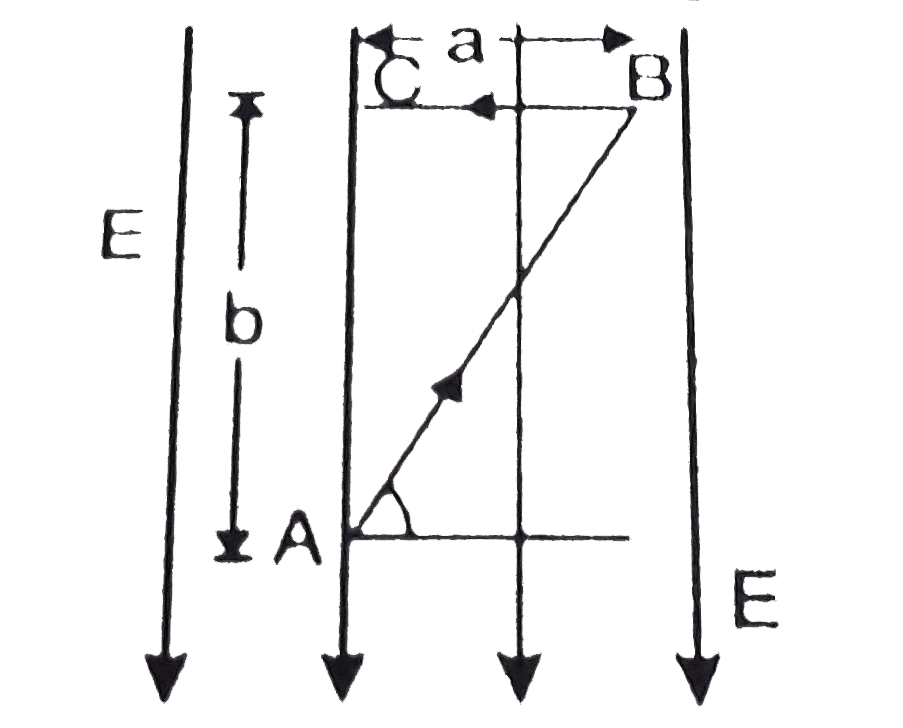In a uniform electric field a charge of 3 C experiences a force of 3000 N. The potential difference between two points 1 cm apar along the electric lines of force will be
10V
90V
1000V
9000V
The correct Answer is:A
F=QE⇒300=3×E⇒E=100N/C
E=dVdx⇒ΔV=100×110=10V
Topper's Solved these Questions
- MISCELLANEOUSBOOK - ALLENCHAPTER - MISCELLANEOUSEXERCISE - Exersice-03
7 Videos
- MISCELLANEOUSBOOK - ALLENCHAPTER - MISCELLANEOUSEXERCISE - ASSERTION-REASON
18 Videos
- MISCELLANEOUSBOOK - ALLENCHAPTER - MISCELLANEOUSEXERCISE - Part -II Example Some worked out Examples
1 Videos
- KINEMATICS (MOTION ALONG A STRAIGHT LINE AND MOTION IN A PLANE)BOOK - ALLENCHAPTER - KINEMATICS (MOTION ALONG A STRAIGHT LINE AND MOTION IN A PLANE)EXERCISE - BEGINNER S BOX-7
8 Videos
- PHYSICAL WORLD, UNITS AND DIMENSIONS & ERRORS IN MEASUREMENT BOOK - ALLENCHAPTER - PHYSICAL WORLD, UNITS AND DIMENSIONS & ERRORS IN MEASUREMENT EXERCISE - EXERCISE-IV
8 Videos
Similar Questions
When a charge of 3 coulombs is placed in a uniform electric field, it experiences a force of 3000 netwon. Within this field, potential difference between two points separated by a distance of 1cm is
View SolutionThe potential difference points a and B in the given uniform electric field is :

View SolutionChoose the correct alternatives.
(i) Acceleration due to gravity increases/decreases with increasing altitude.
(ii) Acceleration due to gravity increases/decreases with increasing depth (assume the earth to be a sphere of uniform density.
(iii) Acceleration due to gravity is independent of the mass of the earth/mass of the body.
(iv)The formula −GMm(1r2−1r1) is more/less accurate than the formula mg (r2−r1) for the difference of potential energy between two points r2 and r1 distance away from the centre of the earth.
View SolutionA uniform electric field is along x-axis. The potential difference VA−VB=10V is between two points A (2m, 3m) and (4m, 8m). Find the electric field intensity.
View SolutionIf electric field is uniform, then the electric lines of forces are :
View SolutionA test charge q is moved without acceleration from A to C along the path from A to B and then from B to C in electric field E as shown in Fig. (i) Calculate the potential difference between A and C (ii) At what point [of A and C] is the electric potential more and why?

View SolutionUniform electric field of magnitude 100Vm−1 in space is directed along the line y=3+x. Find the potential difference between points A(3,1)andB(1,3).
View SolutionIn a uniform electric field if a charge is fired in a direction different from the line of electric field then the trajectory of the charge will be a
View SolutionElectromotive force and Electric potential differ in the dimensions of
View SolutionAn electron accelerated through a potential difference V passes through a uniform tranverses magnetic field and experiences a force F. If the accelerating potential is increased to 2V, the electron in the same magnetic field will experience a force:
View Solution
